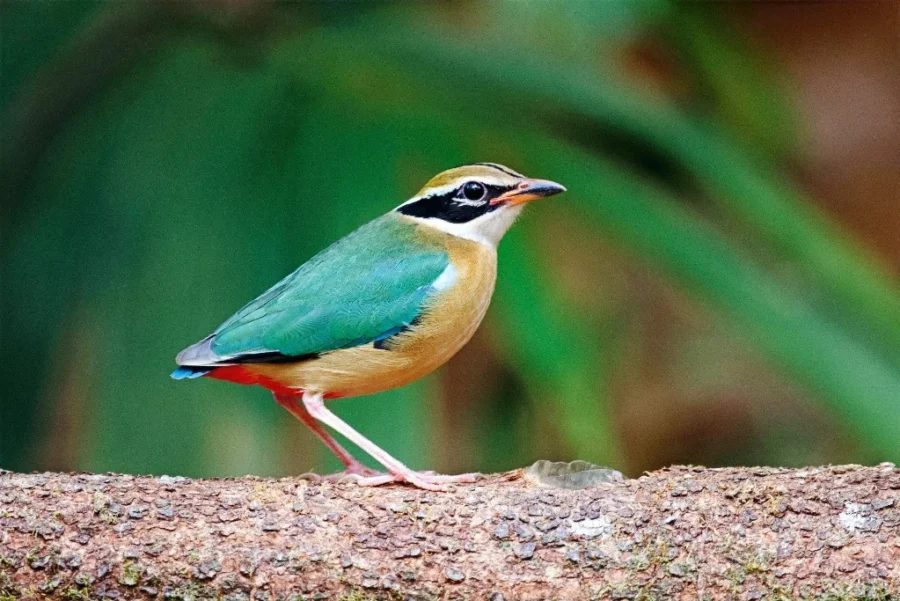
The Indian Pitta is a rare and colorful bird species found in India. It breeds in the foothills of the Himalayas and migrates to southern India and Sri Lanka during winter. In the past, people used to hunt these birds using crude bird snares for food and feathers, but hunting and bird trapping are now banned by law. Despite being protected, Indian Pittas are still difficult to spot in plantations where they were once plentiful. I recently spent a few days searching for them on a plantation known for pitta habitat, but I did not get any trace of the bird. It is likely that they stopped visiting plantations due to pesticides or the lack of earthworms and other bugs in the ground.
Pittas are shy birds that hide in small patches of vegetation during the day and become active at dawn and dusk to search for little insects. If you’re looking to see Indian Pittas in South India, the best places are Thattekad in Kerala and Masangudi in Tamil Nadu. Winter migration of these birds starts in November, so plan your visit between December and March for the best chance of spotting them. You can also visit bird baths managed by local guides to get up close and photograph them from a hide.
Where can I find Indian Pittas in South India?
Thattekakd in Kerala and Masangudi in Tamilnadu are the best places to see Indian pittas in South India. Winter migration of these species starts in November. So if you plan to visit South India between December and March, you will most likely see them. Bird baths, managed by local bird guides, are a good choice for bird photographers to get them up close and photograph them from a hide.
This photograph was taken in 2018 from a bird hide in Thattekkad.
The friendly bird posed for us for nearly ten minutes before returning to the bush. Its brilliant colours always dazzle me when I observe an Indian pitta using binoculars.
Bird Guide: Danish Trogon

